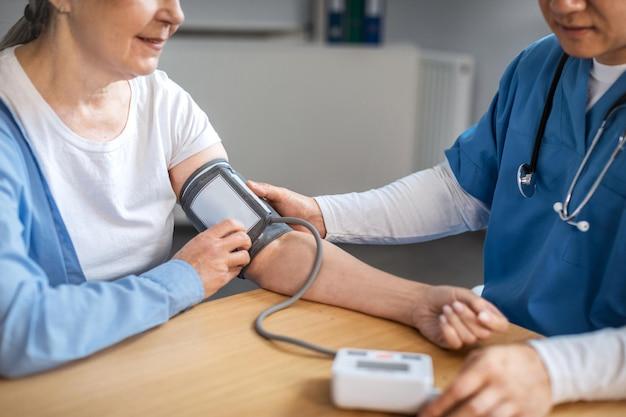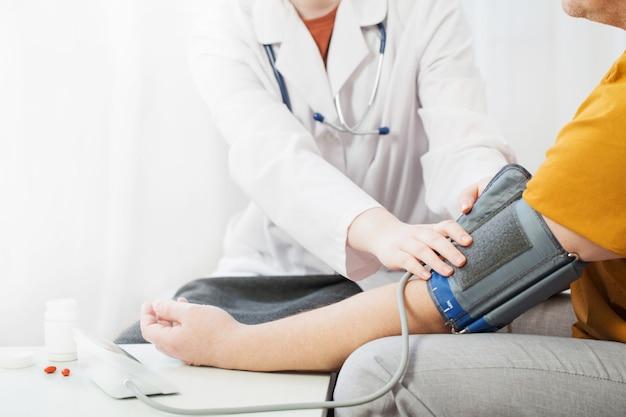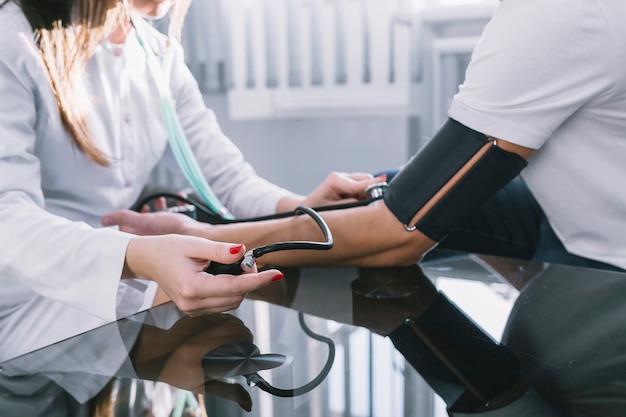Have you recently been in a car accident and experienced chest pain after the airbag deployed? You’re not alone. Many people complain about chest discomfort after a collision, but the good news is that there are ways to alleviate the pain. In this blog post, we will explore the reasons behind chest pain from airbag deployment, the duration of soreness, and most importantly, effective methods to treat and heal from these injuries. So let’s dive in and find relief for that chest discomfort!
How to Relieve Chest Pain After Airbag Deployment
Overview of Chest Pain from Airbag Deployment
When you experience the sudden deployment of an airbag, it can be a real shock to the system. While airbags are designed to protect us during accidents, they can sometimes cause their own set of problems, including chest pain. If you’re experiencing this discomfort after your airbag has deployed, don’t worry – we’ve got you covered. In this section, we’ll explore some effective ways to treat and relieve chest pain caused by airbag deployment.
1. Take a Moment to Assess the Situation
After the initial shock of an airbag deployment, it’s important to sit back and take a moment to assess the situation. Check for any visible injuries or signs of serious trauma. If you notice any severe symptoms or if the chest pain is unbearable, seek immediate medical attention.
2. Apply Ice or Cold Compress to Affected Area
One simple and effective way to relieve chest pain caused by airbag deployment is to apply ice or a cold compress to the affected area. This can help reduce inflammation and numb the pain. Wrap the ice pack in a thin cloth and gently place it on your chest, focusing on the areas that are most tender.
3. Use Over-the-Counter Pain Relievers
Over-the-counter pain relievers, such as ibuprofen or acetaminophen, can also provide relief for chest pain. Follow the instructions on the packaging and take the recommended dosage. Remember to consult with a healthcare professional if you have any underlying medical conditions or are taking other medications.
4. Try Deep Breathing Exercises
Deep breathing exercises can help relax your chest muscles and alleviate the pain. Find a comfortable position, whether sitting or lying down, and take slow, deep breaths. Inhale deeply through your nose, hold for a few seconds, and then exhale slowly through your mouth. Repeat this several times, focusing on the sensation of your breath filling and leaving your chest.
5. Ensure Proper Rest and Sleep
Rest and sleep are crucial for the body’s healing process. Make sure you get enough quality sleep to allow your body to recover from the trauma of the airbag deployment. Avoid excessive physical activity that may strain your chest muscles and prolong the pain.
Conclusion
Chest pain from airbag deployment can be quite uncomfortable, but there are steps you can take to alleviate the discomfort. Remember to assess the situation, apply ice or a cold compress, use over-the-counter pain relievers as directed, try deep breathing exercises, and prioritize rest and sleep. If the pain persists or worsens, it’s important to consult a healthcare professional for further evaluation. By following these tips, you’ll be on your way to a speedier recovery and back to feeling like yourself in no time!
Side Effects of Airbag Deployment
Understanding the Unwanted Consequences
When it comes to car safety, airbags are undoubtedly a life-saving invention. They cushion the impact during a collision and protect us from severe injuries. However, just like any superhero with a few flaws, airbags are not entirely perfect. In their valiant effort to save us, they can also cause some unintended side effects that are worth knowing about.
The Whiplash Effect: No, It’s Not a Dance Move
One of the most common side effects of airbag deployment is whiplash. This abrupt forward and backward movement of the neck can occur due to the sheer force with which the airbag inflates. While whiplash may not be as pleasant as a dance move, it can result in pain, stiffness, and discomfort in the neck and upper back area.
A Breath-Taking Impact: Chest Pain
Airbags can pack a powerful punch, especially when they deploy. As a result, some individuals may experience chest pain after an airbag inflates. This discomfort can range from a mild ache to a more intense sensation. It’s essential to pay attention to any persistent or severe chest pain, as it may indicate a more serious underlying issue that requires medical attention.
The Eyes Have It: Eye Irritation
Airbags deploy with an impressive speed, and while their main goal is to protect our vital body parts, they can also cause some awkwardness in the eye department. The force of the airbag deployment can lead to eye irritation, such as redness, itching, or even temporary blurred vision. It’s advisable to consult an eye specialist if such symptoms persist or worsen over time.
Ears on Alert: Hearing Problems
In the heat of the moment, airbag deployment can create a deafening noise. This auditory assault can result in temporary hearing loss, ringing in the ears, or other hearing problems. While these issues often resolve on their own, it’s essential to keep an eye (or ear) on them and seek professional medical help if necessary.
A Slap to the Face: Facial Injuries
During the rapid inflation of an airbag, it’s possible to sustain facial injuries. Although the airbag’s purpose is to protect us, it can sometimes cause abrasions, bruises, or even cuts to the face. If any facial injuries occur due to airbag deployment, it’s crucial to seek immediate medical attention for proper evaluation and treatment.
While airbags undoubtedly save lives, it’s important to be aware of their potential side effects. From whiplash to eye irritation and chest pain, these inconveniences can sometimes accompany the life-saving assistance provided by airbags. By understanding these side effects, we can better prepare ourselves and seek appropriate medical attention when necessary. Stay informed, stay safe, and let those airbags do their superhero job of protecting us!
Chest Pain After Airbag Deployment
So, you’ve experienced the thrilling deployment of an airbag, but now you’re left with an unwelcome companion: chest pain. Don’t worry – you’re not alone in this little discomfort. Let’s dive into the realm of chest pain after airbag deployment and find out what we can do to ease your discomfort.
Why the Chest Pain
The chest pain you feel after an airbag deployment is not uncommon. In fact, it’s a result of the powerful force that saved you from a potential disaster. When an airbag deploys, it inflates rapidly, and your chest might get absorbed by its cushiony goodness. Alongside the adrenaline and high-speed excitement, it’s no wonder your chest might feel a bit sore afterwards.
Taking the First Steps
Once you detect chest pain after an airbag deployment, it’s crucial to take the right steps to ensure your comfort and well-being. First and foremost, check to see if you have any visible injuries or broken bones. If you notice anything unusual, it’s imperative to seek medical attention immediately, as this could be a sign of a more serious issue.
Ice, Ice Baby!
In the case of minor chest pain, ice is your new best friend. Applying an ice pack or a bag of frozen peas wrapped in a towel can help reduce inflammation and numb the pain. Remember to keep the ice pack on for 15-20 minutes, then take a break for at least 10 minutes before reapplying.
Time to Rest and Relax
Don’t forget to give your body some well-deserved rest. Yes, that means taking it easy and avoiding any strenuous activities that might exacerbate your chest pain. Take the opportunity to catch up on your favorite shows or indulge in some light reading. You deserve it after your action-packed encounter with the airbag!
Over-the-Counter Medications
If the pain persists, you can consider taking over-the-counter pain relievers like ibuprofen or acetaminophen. These can help alleviate the discomfort and reduce any swelling. However, it’s always a good idea to consult with a medical professional before taking any medications, especially if you have any underlying health conditions or are currently on other medications.
When to See a Doctor
While most cases of chest pain after airbag deployment are not severe, it’s important to be aware of any symptoms that may indicate a more significant issue. If you experience difficulty breathing, persistent chest pain, or notice any changes in your heart rate or blood pressure, it’s crucial to seek medical attention immediately. Better safe than sorry!
Remember, although chest pain after airbag deployment may not be the most enjoyable experience, it’s a small price to pay for the protection and safety an airbag provides. Take care of yourself, follow these suggestions, and soon enough, your chest will be pain-free once again. Stay safe and enjoy your smooth rides!
Why Does My Chest Hurt After the Airbag
Understanding the Impact of Airbag Deployment
So, you’ve just experienced an unfortunate event where the airbag in your vehicle deployed. First of all, I hope you’re okay! It can be quite a shocking experience, and it’s normal to feel a little shaken up afterward. But why does your chest hurt after the airbag?
The Protective Power of Airbags
Airbags are designed to protect you during a collision by rapidly inflating and cushioning the impact. They act as a buffer between your body and the hard surfaces of the vehicle, preventing more serious injuries. However, even though they’re there for your safety, airbags can still cause some discomfort.
The Force Behind the Punch
When an airbag deploys, it does so with a considerable amount of force. The rapid inflation and subsequent deflation can create a powerful impact. This force can push you back into your seat, causing your chest to collide with the seatbelt or the steering wheel. Ouch!
Bruises and Minor Injuries
The impact of an airbag deployment can result in bruises and minor injuries, especially in sensitive areas like the chest. The force can cause contusions or small blood vessels to break, leading to those painful marks we’re all too familiar with. However, keep in mind that these injuries are usually superficial and will heal with time.
Body Mechanics Matter
Another factor to consider is your body position at the time of the collision. If you were leaning forward or sitting too close to the steering wheel, the impact of the airbag could be more intense. Oh, the perils of trying to reach the drive-thru window without unbuckling!
Whip It Real Good
Whiplash, a common occurrence in accidents, can also contribute to chest pain after airbag deployment. The force of the collision can cause your head and neck to rapidly jerk forward and backward, leading to strain on the muscles and ligaments in your chest and neck region. It’s like a not-so-danceable version of the ’80s hit!
Seek Medical Attention
While chest pain after airbag deployment is generally not a cause for major concern, it’s still essential to get yourself checked out by a medical professional. They can assess any underlying injuries and provide appropriate treatment or advice. Remember, your health comes first!
In summary, chest pain after the deployment of an airbag is often caused by the force of impact and the collision itself. Bruises, minor injuries, body mechanics, and the infamous whiplash can all contribute to this discomfort. However, if you’re experiencing severe pain or any other concerning symptoms, don’t hesitate to seek medical attention. Stay safe out there on the roads!
What Helps Chest Pain After a Car Accident
Introduction
Getting into a car accident can be a terrifying experience, and one of the most common injuries people suffer from is chest pain. If you’ve recently been in an accident and are experiencing discomfort in your chest, you’re not alone. In this article, we’ll discuss effective ways to alleviate chest pain after a car accident, so you can start feeling better and get back to your normal life.
Seek Immediate Medical Attention
Your health should always be your top priority, so if you’re experiencing chest pain after a car accident, don’t hesitate to seek immediate medical attention. Even if the pain seems minor, it’s essential to get a professional evaluation to rule out any serious underlying injuries. Remember, it’s better to be safe than sorry!
Apply Ice or Heat
To help reduce inflammation and alleviate chest pain, you can apply ice or heat to the affected area. Ice packs wrapped in a thin cloth can help minimize swelling and numb the area, providing relief. Alternatively, using a warm compress or taking a warm shower can help relax your muscles and alleviate discomfort. Listen to your body and choose the option that feels more soothing for you.
Take Over-the-Counter Pain Medications
Over-the-counter pain medications, such as ibuprofen, can help relieve chest pain after a car accident. These medications work by reducing inflammation and minimizing discomfort. However, always consult with a healthcare professional before taking any medications to ensure they won’t interfere with any other treatments or medications you may be on.
Practice Deep Breathing Exercises
Chest pain after a car accident can make it difficult to take deep breaths, which can exacerbate the discomfort. Engaging in deep breathing exercises can help relax your chest muscles and promote healing. Take slow, deep breaths, inhaling through your nose and exhaling through your mouth. You can also try techniques like counting to calm your mind and distract you from the pain.
Rest and Take It Easy
Sometimes, the best way to heal is to rest and allow your body to recover. After a car accident, give yourself time to rest and avoid activities that may strain your chest muscles further. Take it easy and give your body the chance to heal naturally, allowing the pain to subside gradually.
Experiencing chest pain after a car accident can be a distressing and uncomfortable experience. By following these simple steps, such as seeking medical attention, applying ice or heat, taking over-the-counter pain medications, practicing deep breathing exercises, and giving yourself time to rest, you can effectively alleviate your chest pain and start your journey to recovery. Remember to always consult with a healthcare professional for proper evaluation and guidance.
How Long Does the Soreness Last After an Airbag Deploys
When it comes to chest pain caused by airbag deployment, one burning question always pops up: “How long am I going to feel sore?” Well, my friend, let’s delve into that topic and find some answers!
Factors to Consider
The duration of soreness after an airbag deploys can vary from person to person and depends on various factors. Let’s take a look at a few of these factors:
1. Impact Intensity and Positioning
The intensity with which the airbag deploys and the position of your body at the moment of impact can significantly affect the length of your soreness. If you were sitting upright or if the impact was severe, you might experience longer-lasting discomfort.
2. Pre-Existing Conditions
If you already have any chest injuries or pre-existing medical conditions, it might slow down your recovery process. Remember, it’s crucial to seek medical attention if you have any concerns about potential complications.
3. Individual Healing Abilities
Everyone’s body has its own pace of healing. Some people may bounce back quicker than others. So, don’t compare your recovery timeline with others, and give yourself the necessary time to heal.
The Common Duration
Typically, the soreness after airbag deployment lasts for about a week or two. During this time, you might experience tenderness, bruising, swelling, and stiffness around the chest area. But worry not, my friend, it’s all part of the healing process!
Tips for Easing the Soreness
While you patiently wait for the discomfort to fade away, here are some things you can do to ease the soreness:
1. Rest and Relaxation
Give your body ample time to recuperate by getting plenty of rest. Avoid strenuous activities that could strain your chest muscles further.
2. Gentle Exercises
Once your doctor gives the green light, engage in gentle exercises to help restore mobility and alleviate soreness. Stretching and light cardio activities can go a long way.
3. Pain Relief
Over-the-counter pain medications can help manage the discomfort. However, always consult your healthcare provider before taking any medication to ensure it is safe for you.
4. Heat and Ice Therapy
Applying a heating pad or using ice packs on the affected area can provide temporary relief from pain and reduce inflammation. Just be sure to use a cloth barrier between the pack and your skin to avoid burns or frostbite.
Listen to Your Body
Remember, my friend, this article serves as a general guide, but everyone’s situation is unique. It’s crucial to listen to your body and seek professional medical advice if you have any concerns or experience severe or prolonged discomfort.
So, take a deep breath, be patient, and allow your body to heal naturally. Before you know it, the soreness will be a distant memory, and you’ll be back to feeling as right as rain!
How Long Will My Chest Hurt After a Car Crash
An Uncomfortable Reminder: Chest Pain After Airbag Deployment
Car crashes are terrifying experiences that can leave lasting physical and emotional effects. If you’ve recently been involved in a car accident and experienced the deployment of an airbag, you might be wondering how long your chest pain will persist. While every person and situation is unique, here are some general guidelines to keep in mind.
Immediate Shock and Discomfort
Right after a car crash, the shock from the impact and the sudden deployment of an airbag can cause immediate chest pain. This discomfort is a natural response to the intense forces involved in a collision. It’s important to remember that your body has just experienced a traumatic event, and it needs time to heal.
The Honeymoon Phase
After the initial shock wears off, you may enter what some people refer to as the “honeymoon phase.” During this period, the chest pain may temporarily subside or become less intense. However, it’s important not to mistake this relief for complete healing. Your body is still in the recovery process, and the pain may return later.
The First Few Days: Varying Degrees of Pain
In the first few days following the car crash, you may experience fluctuating levels of chest pain. It’s not uncommon for the pain to come and go or change in intensity. This is due to the body’s natural healing process and the inflammation that occurs as a result of the impact. Rest assured that as time passes, the pain should gradually diminish.
Weeks of Healing: Patience is Key
As the weeks go by, you may still feel some residual discomfort in your chest. However, the pain should gradually lessen as your body heals. It’s crucial to give yourself plenty of rest and allow your body the time it needs to recover fully. Remember, everyone heals at their own pace, so be patient with yourself throughout the healing process.
Seeking Medical Attention
While some degree of chest pain is to be expected after a car crash, it’s always important to seek medical attention to ensure there are no underlying issues. Only a qualified healthcare professional can evaluate your condition and provide personalized advice tailored to your situation. They can also monitor your progress and address any concerns you may have.
In summary, the duration of chest pain after a car crash can vary from person to person. It’s normal to experience immediate discomfort, followed by fluctuating levels of pain in the coming days and weeks. Remember to listen to your body, give yourself time to heal, and consult a healthcare professional if needed.
How Long Does It Take to Heal from Airbag Injuries
The Road to Recovery: Healing from Airbag Injuries
When it comes to recovering from airbag injuries, the healing process can vary from person to person. Factors such as the severity of the injury and individual healing capacity play a significant role in determining the duration of recovery. Let’s take a closer look at the different stages of healing and what you might expect along the way.
Stage 1: Immediate Aftermath
Right after experiencing an airbag deployment, it’s crucial to seek medical attention promptly. Even if you don’t notice any immediate symptoms, it’s always best to get checked out. Remember, not all injuries are visible right away, so a professional evaluation is essential.
Stage 2: Acute Phase
During the first few weeks following an airbag injury, you may experience discomfort, pain, and swelling. This is your body’s natural response to heal itself. Adhering to your doctor’s advice, pain management techniques, and taking any prescribed medication can help ease your discomfort and speed up the healing process.
Stage 3: Rehabilitation
Depending on the severity of your airbag injury, your doctor may recommend rehabilitation or physical therapy. These treatments aim to restore your strength, flexibility, and range of motion. Engaging in targeted exercises and following your therapist’s guidance can contribute significantly to your recovery.
Tips for a Speedy Recovery:
- Consistency is key: Stick to your rehabilitation sessions and exercises diligently.
- Don’t rush it: Give your body the time it needs to heal properly. Pushing yourself too hard too soon could potentially hinder progress.
- Listen to your body: If something feels painful or uncomfortable, communicate it with your healthcare provider. They can adjust your treatment plan accordingly.

Stage 4: Long-Term Recovery
While many people recover fully from airbag injuries within several weeks to months, some severe cases may require more time to heal. Each person’s journey is unique, and patience is essential. It’s important not to compare your progress to others. Focus on taking care of yourself and following any post-treatment recommendations your doctor provides.
Prioritize Self-Care:
- Get adequate rest and sleep to facilitate healing.
- Follow a healthy diet rich in nutrients, as it can aid in the healing process.
- Take care of your mental health. Reach out to friends, family, or professionals if you need support during your recovery.
Remember, recovering from airbag injuries is a unique process for each individual. While some may heal quickly, others may need more time and additional care. Be patient, follow your healthcare provider’s guidance, and prioritize self-care throughout your recovery journey. With time and proper attention, you’ll be on your way to a full and healthy recovery.


